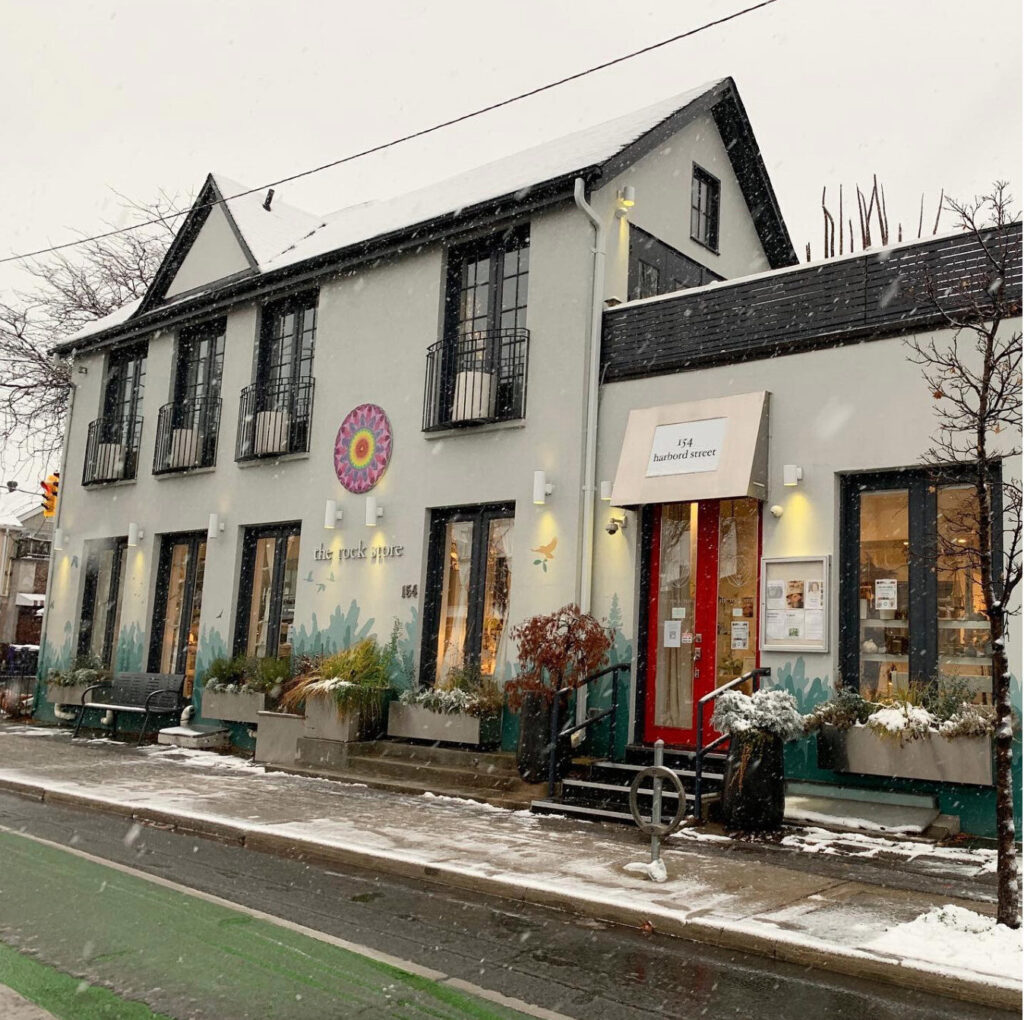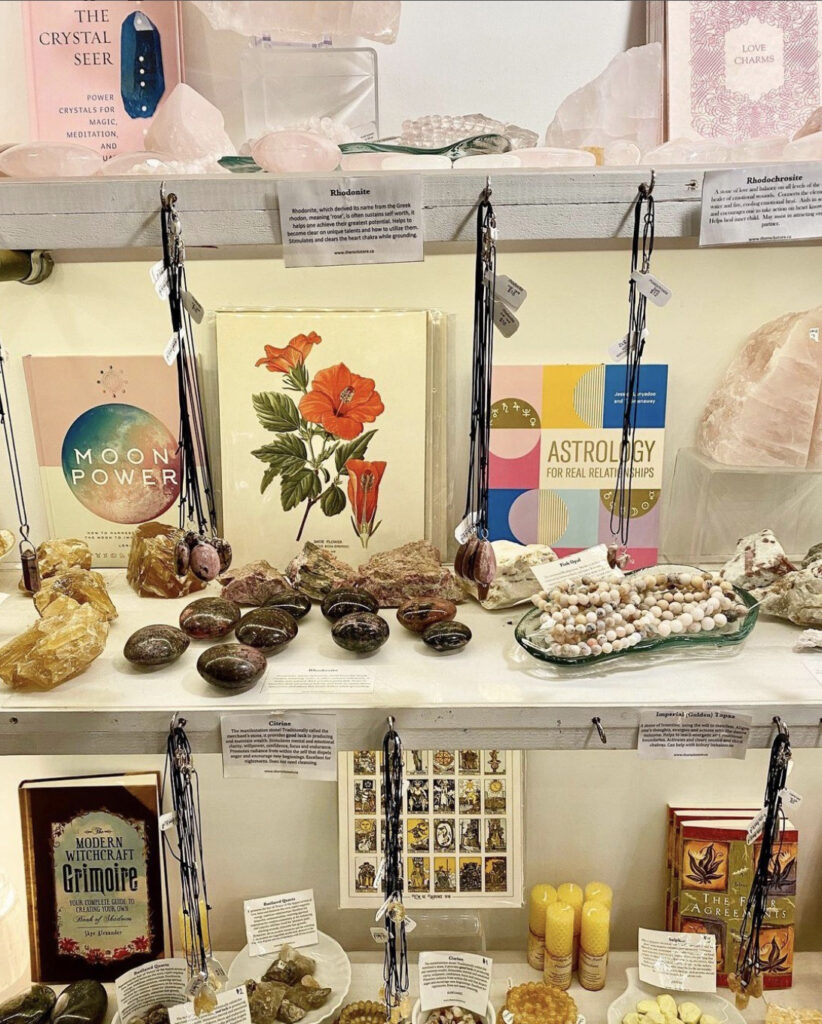By Christina Apa
X University student Genevieve Eichammer was at a breaking point. Two years into the pandemic, she felt less optimistic about life returning to normal. She had tried many self-care tips like going for walks, taking baths and baking, but nothing seemed to make her feel as content as she did before the pandemic. Then, her friend sent her a TikTok on how rose quartz is supposed to help with anxiety, and Eichammer thought it wouldn’t hurt to try them. After buying crystals from a shop in Toronto, she was surprised to find these rocks brought more comfort to her than a warm bath ever did.
“Crystals have given me something to believe in these weird times,” Eichammer said, clutching her heart-shaped rose quartz to her chest. What started as one stone has now turned into a collection of five kept in a box on her desk. “I keep them on me or near me and I feel like that helps me.”
While the market for diamonds declined during the pandemic, crystals maintained their appeal and are now a $1 billion industry. Social media played a role in attracting young people—on TikTok, the hashtag “healing crystals” garnered over 90 million views over the past two years. TikTok user @jaykaizen posted a video in July 2021 on how to “recharge your crystals” that got over 20 million views and 5 million likes.
Despite no scientific evidence that these stones have healing powers, crystals have been experiencing a resurgence during the pandemic. Some people like Eichammer needed something to believe in, while others wanted to feel like they were in control of their own fate and emotions during these uncertain times. So they turned to crystals, and experts say their belief that they could help cure their pandemic blues probably actually helped
Stuart Vyse is an American psychologist who specializes in superstitions and critical thinking. In his book Believe in Magic: The Psychology of Superstition, he wrote that people use things like healing crystals as a way to make the world more bearable. “In a world that is increasingly frenetic and stressful, it is natural to seek something that will lift us up from the mundane and predictable nature of our days.”
Crystals definitely made life feel less intense, said Samantha Chin, owner of the Toronto-based retail shop The Rock Store. “People were searching for something that brought more meaning and made life feel special,” said Chin, whose shop had “lineups up and down the street” as the pandemic progressed. She said the pandemic caused people to need more out of their lives. “Crystals made people feel like they’re doing something about how they’re feeling.”
While crystals may not be able to physically heal a person, some psychologists claim that the placebo effect is what makes people believe that the stones work. “The power of crystals is in the mind instead of in the crystals,” psychologist Richard Wiseman told The Telegraph. If a person feels like the crystals are helping them, then they are more likely to work.
Due to her pandemic-induced anxiety, Cassandra Vidiri, 25 turned to healing crystals in 2020 after her psychic recommended them. “When I feel anxious, I sage my crystals and meditate with them and I feel a weight lift off my shoulders,” she said. (Saging is an Indigenous tradition where they burn sage to get rid of negative energy in an environment.) To help Vidiri feel grounded when she started her new job, she brought black tourmaline, a stone supposedly known to transform anxious feelings, and squeezed it in her hand. Vidiri said she felt instant relief. She also uses crystals to cleanse the energy in her home when she feels stressed
 Cassandra Vidiri embarks on her journey to The Rock Store on Tuesday March 1st, 2022 in Toronto Ont. First she must look at the map. (Christina Apa/T•)
Cassandra Vidiri embarks on her journey to The Rock Store on Tuesday March 1st, 2022 in Toronto Ont. First she must look at the map. (Christina Apa/T•) Cassandra Vidiri scrolls on her phone on Tuesday March 1st, 2022 in Toronto Ont. looking at the crystals she’s planning to buy from the shop. (Christina Apa/T•)
Cassandra Vidiri scrolls on her phone on Tuesday March 1st, 2022 in Toronto Ont. looking at the crystals she’s planning to buy from the shop. (Christina Apa/T•) The subway ride on Tuesday March 1st, 2022 in Toronto Ont. is long but Cassandra Vidiri doesn’t mind. She’s just glad to be going. (Christina Apa/T•)
The subway ride on Tuesday March 1st, 2022 in Toronto Ont. is long but Cassandra Vidiri doesn’t mind. She’s just glad to be going. (Christina Apa/T•) The Rock Store is bright and vibrant on Tuesday March 1st, 2022 in Toronto Ont. just like Cassandra Vidiri saw on the website. She is excited to go in and look around. (@the_rock_store via Instagram)
The Rock Store is bright and vibrant on Tuesday March 1st, 2022 in Toronto Ont. just like Cassandra Vidiri saw on the website. She is excited to go in and look around. (@the_rock_store via Instagram) There are so many beautiful stones to choose from on Tuesday March 1st, 2022 in Toronto Ont. Cassandra Vidiri makes sure to read what each of them mean so that she can choose which one is best for her. (@the_rock_store via Instagram)
There are so many beautiful stones to choose from on Tuesday March 1st, 2022 in Toronto Ont. Cassandra Vidiri makes sure to read what each of them mean so that she can choose which one is best for her. (@the_rock_store via Instagram) Back at Cassandra Vidiri’s home on Tuesday March 1st, 2022 in Toronto Ont., she takes her new crystals out of their mesh pouches and puts them with the rest of her collection. Now she must cleanse them with sage and begin her new healing crystal journey! (Christina Apa/T•)
Back at Cassandra Vidiri’s home on Tuesday March 1st, 2022 in Toronto Ont., she takes her new crystals out of their mesh pouches and puts them with the rest of her collection. Now she must cleanse them with sage and begin her new healing crystal journey! (Christina Apa/T•)
But not everyone believes in crystals at first. Sofia Munive, a student from Toronto, wondered how a rock could make her feel better. But when she had to take her first midterm in person, her attitude changed: “I was nervous so my friend gave me her amethyst stone to hold before I took the test.” Amethyst is meant to “increase intelligence” and “calm the brain.” Munive said she was able to stay calm throughout the test. “I like to think that the crystal helped to calm me down a bit,” she said.
Munive isn’t sure if she’ll use crystals forever but does enjoy using them for now. She sees crystals as more of a hobby than something she’s dedicated to and likes to wear them in different forms of jewelry around campus. “I don’t know what the future will hold but for right now, crystals have given me some comfort and I want to hold onto that for as long as I can.”
